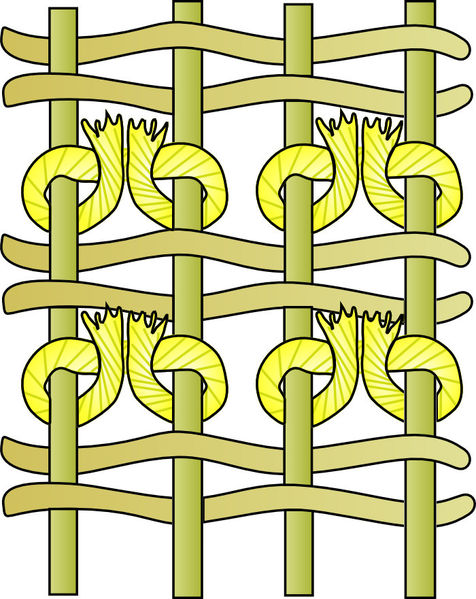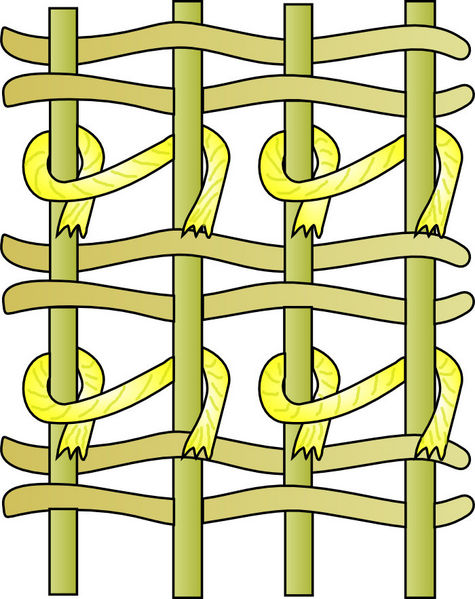Knot density is a traditional measure for quality of handmade or knotted pile carpets. It refers to the number of knots, or knot count, per unit of surface area - typically either per square inch (kpsi) or per square centimeter (kpsc), but also per decimeter or meter. Number of knots per unit area is directly proportional to the quality of carpet. Density may vary from 25 to 1,000 knots per square inch or higher, where ≤80 kpsi is poor quality, 120 to 330 kpsi is medium to good, and ≥330 kpsi is very good quality. The inverse, knot ratio, is also used to compare characteristics. Knot density = warp×weft while knot ratio = warp/weft. For comparison: 100,000/square meter = 1,000/square decimeter = 65/square inch = 179/gereh.
Back side of a Qom rug with very high knot density
Ghiordes knot
Senneh knot
A knotted-pile carpet is a carpet containing raised surfaces, or piles, from the cut off ends of knots woven between the warp and weft. The Ghiordes/Turkish knot and the Senneh/Persian knot, typical of Anatolian carpets and Persian carpets, are the two primary knots. A flat or tapestry woven carpet, without pile, is a kilim. A pile carpet is influenced by width and number of warp and weft, pile height, knots used, and knot density.
Ghiordes knot
Senneh knot
Knotted carpet with colorful wave-like motifs from Yanghai (Subeshi culture) were dated to 700 BCE, and are now the oldest known knotted carpet in the world, before the 4th century BCE Pazyryk carpets. Turpan Museum.
Decorated knotted-pile carpet from Pazyryk-5. 4th century BCE.





